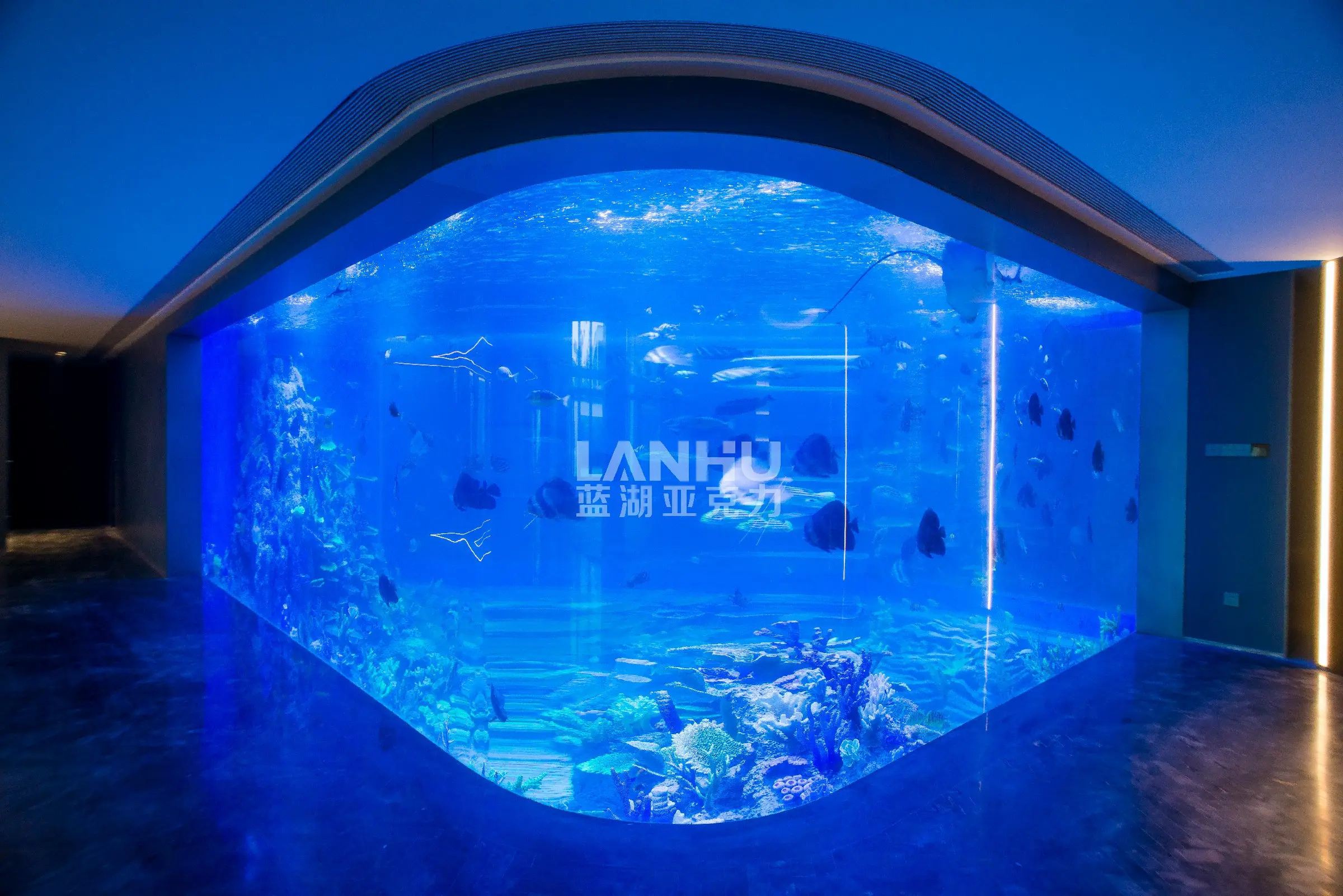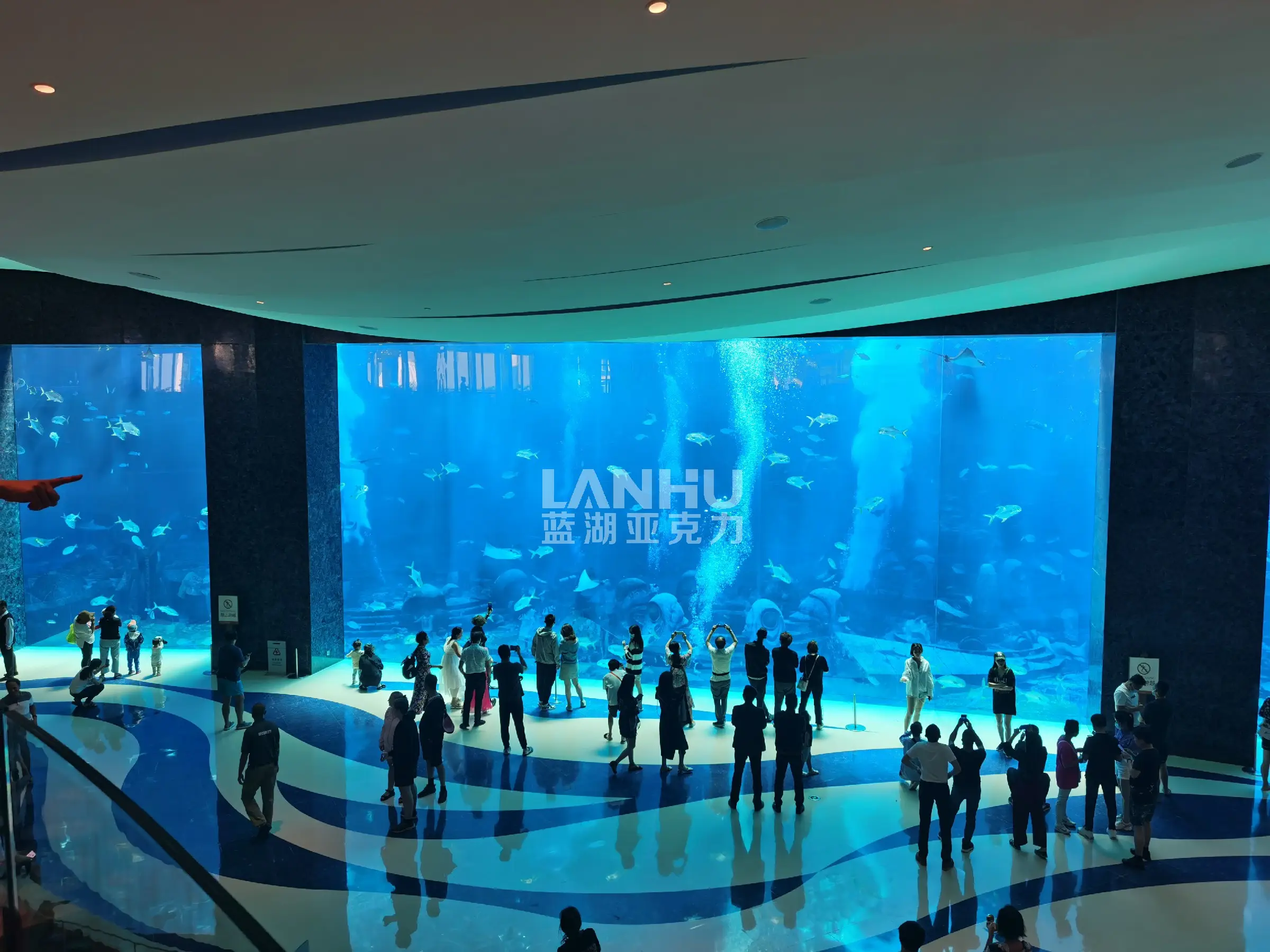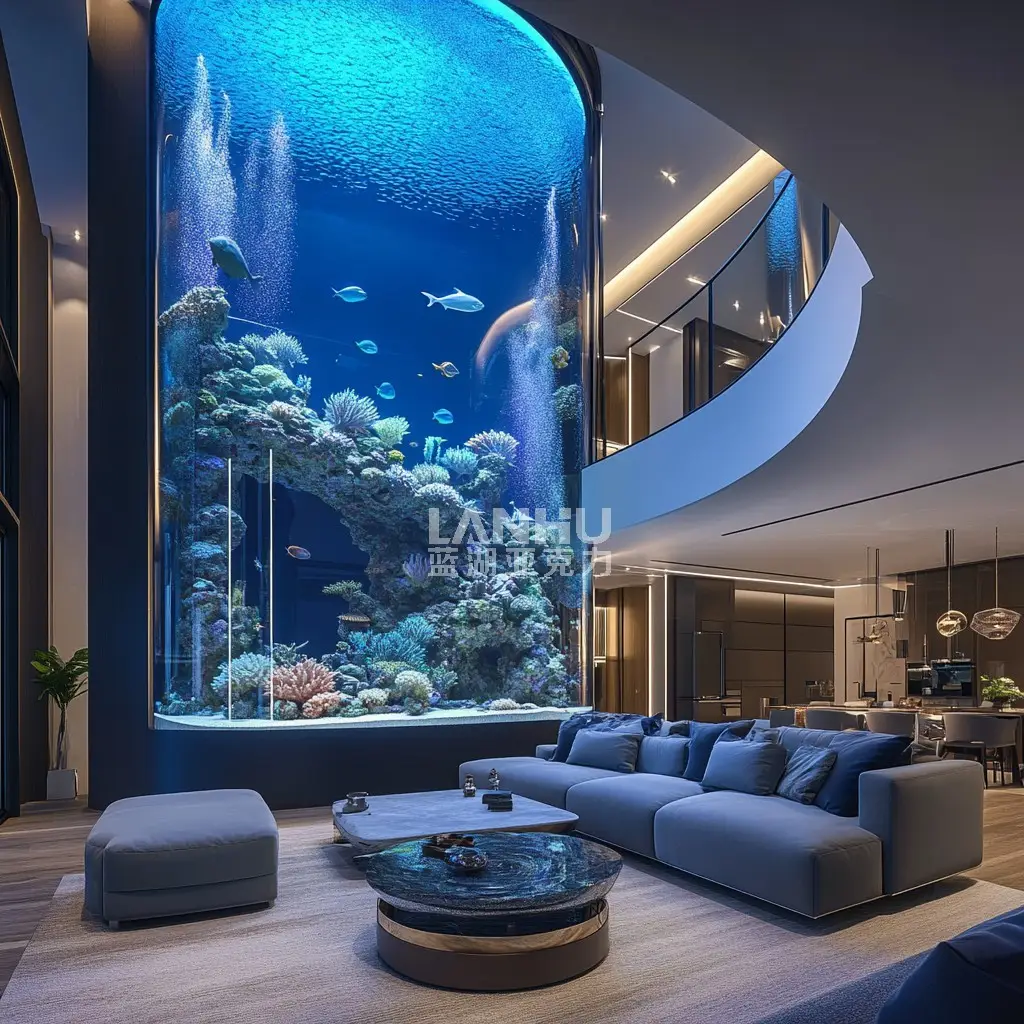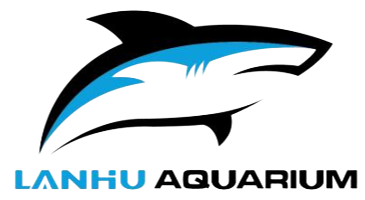Wat is die verskil tussen akrielse en PC-aquariums?
Akriliek en PC (polikarbonaat) bORD s is algemene deurskynende materiale wat gebruik word in groot akvarium s en akwariums projekte . Terwyl hulle dalk soortgelyk in voorkoms kan wees, verskil hulle aansienlik in prestasie, lewensduur en visuele ervaring.

Eerstens is daar 'n verskil in deursigtigheid. Lanhu Akriliek gebruik hoë-kwaliteit gegote bORD materiaal met 'n ligdoordringendheid van meer as 92%, wat 'n duidelike, deurskynende voorkoms bied en dit ideaal maak vir hoë-end plekke soos akwariums en hotelle. PC bORD s het oor die algemeen 'n ligdoordringendheid van ongeveer 88%, wat met die blote oog effens grysagtig lyk.
Tweedens is daar 'n aansienlike verskil in weerstand teen weerstoestande. Akriliek bORD s is UV-weerstandig en kan langtermyn buite gebruik weerstaan sonder om geel te word. PC bORD s is vatbaar vir veroudering en verkleuring onder sterk UV-strale, wat hulle meer geskik maak vir tydelike binne-toepassings. 
Derde, daar is die verskil in sterkte en taaiheid. PC bORD s bied effens groter impakweerstand, maar hul oppervlakhardheid is laer en makliker om te krab. Terwyl akril akvarium s effens minder hard is as glas, kan hul oppervlakke gepoleer en herstel word, wat 'n stabiele en duursame struktuur lewer.
Vierde, daar is die verskil in verwerking en vormgewing. Akril bied uitstekende termovorm-eienskappe en kan in 'n verskeidenheid vorme vervaardig word, insluitend gebuigde en silindriese vorme, wat dit 'n ideale materiaal maak vir hoë-end nasmaaklikheid. PC bORD s het laer plastisiteit en beperkte styl-opsies. 
Vyfde, oorweeg die lewensduur en instandhouding. Akril akwariums kan langer as 10 jaar duur, waar hul deursigtigheid en estetika behou word. PC bORD aquariums het 'n korter lewensduur en is moeilik om te herstel sodra dit gekrap is.
Opsomming: As u op soek is na hoë-definisie visuele effekte, weerstand teen weer en hoë-end aanpasbaarheid, kies Lanhu Akriliek. As u slegs korttermyn, impakweerstandige materiale en 'n beperkte begroting nodig het, PC bORD s mag 'n goeie opsie wees. Vir hoë-end aquariumprojekte bly akriliek die hoofkeuse.

 EN
EN
 AR
AR
 BG
BG
 HR
HR
 CS
CS
 DA
DA
 NL
NL
 FI
FI
 FR
FR
 DE
DE
 EL
EL
 HI
HI
 IT
IT
 JA
JA
 KO
KO
 NO
NO
 PL
PL
 PT
PT
 RO
RO
 RU
RU
 ES
ES
 SV
SV
 CA
CA
 TL
TL
 IW
IW
 ID
ID
 LV
LV
 LT
LT
 SR
SR
 SK
SK
 UK
UK
 VI
VI
 ET
ET
 GL
GL
 HU
HU
 TH
TH
 TR
TR
 FA
FA
 AF
AF
 MS
MS
